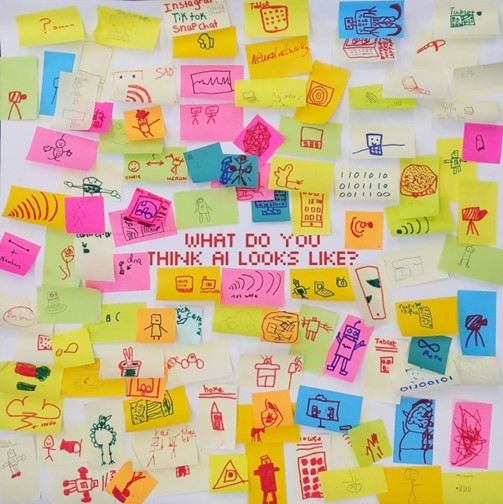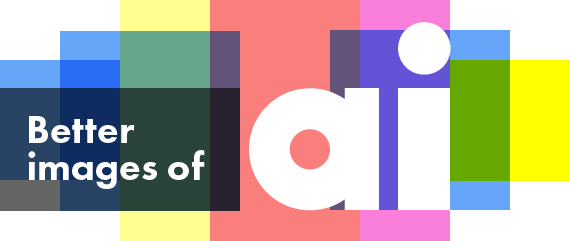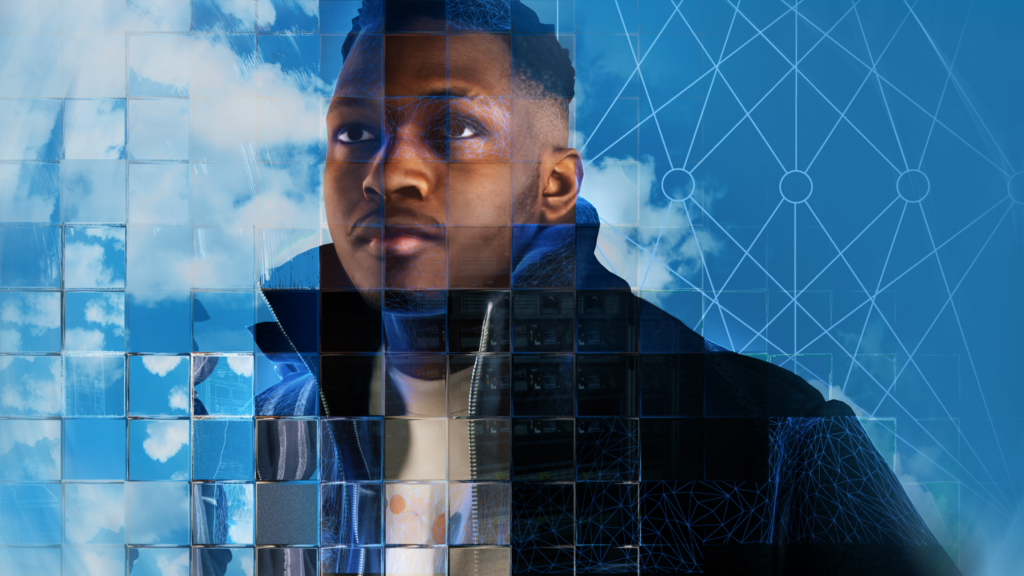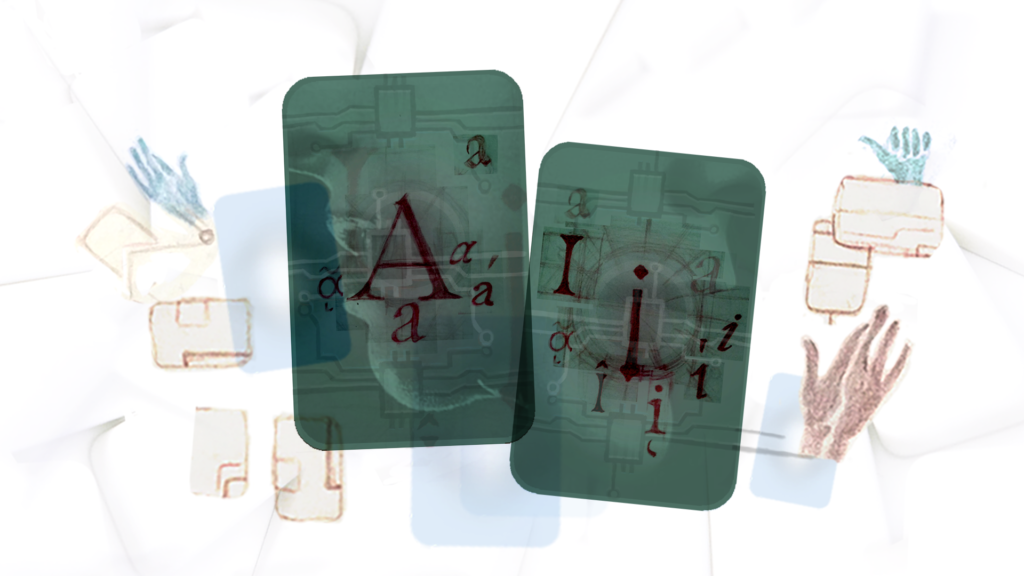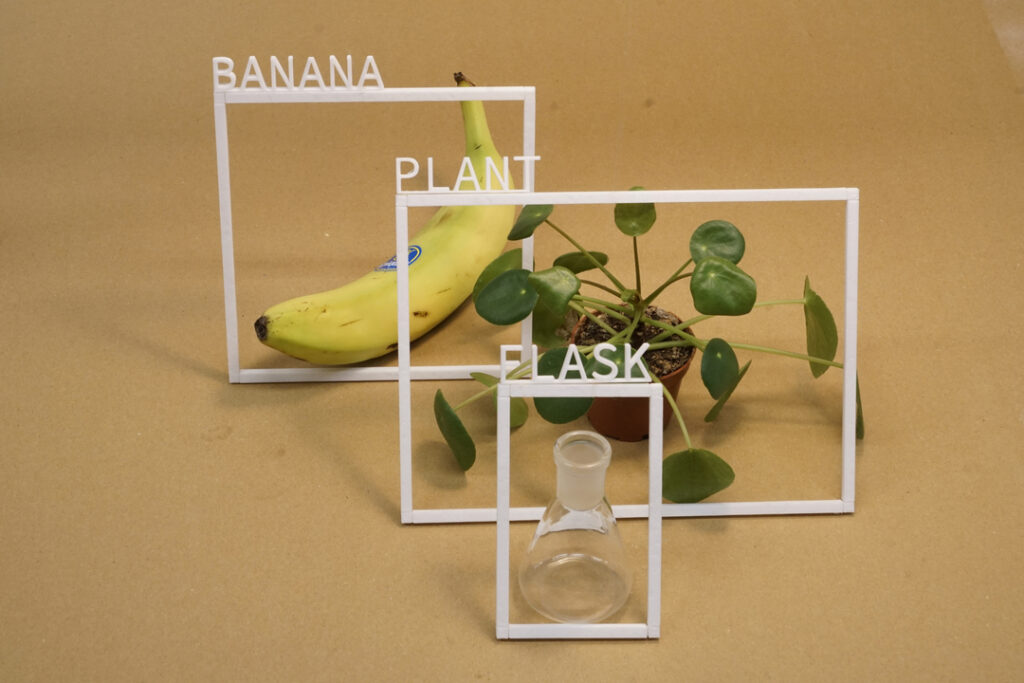At the end of 2024, we launched a public competition with Cambridge Diversity Fund calling for images that reclaimed and recentred the history of diversity in AI education at the University of Cambridge.
We were so grateful to receive such a diverse range of submissions that provided rich interpretations of the brief and focused on really interesting elements of AI history.
Dr Aisha Sobey set and judged the challenge, which was enabled by funding from Cambridge Diversity Fund. Entries were judged on meeting the brief, the forms of representation reflected in the image, appropriateness, relevance, uniqueness, and visual appeal.
We are delighted to announce the winners and their winning entries:
First Place Prize
Awarded to Reihaneh Golpayegani for ‘Women and AI’

This image is inspired by Virginia Woolf’s A Room of One’s Own. According to this essay, which is based on her lectures at Newnham College and Girton College, Cambridge University, two things are essential for a woman to write fiction: money and a room of her own. This image adds a new layer to this concept by bringing it into the Al era.
Just as Woolf explored the meaning of “women and fiction”, defining “women and AI” is quite complex. It could refer to algorithms’ responses to inquiries involving women, the influence of trending comments on machine stereotypes, or the share of women in big tech. The list can go on and involve many different experiences of women with AI as developers, users, investors, and beyond. With all its complexity, Woolf’s ideas offer us insight: Allocating financial resources and providing safe spaces-in reality and online- is necessary for women to have positive interactions with AI and to be well-represented in this field.
Download ‘Women and AI’ from the Better Images of AI library here

About the artist:
Reihaneh Golpayegani is a law graduate and digital art enthusiast. Reihaneh is interested in exploring the intersection of law, art, and technology by creating expressive artworks and pursuing my master’s studies in this area.
Commendation Prize
Awarded to Janet Turra for ‘Ground Up and Spat Out’

The outputs of Large Language Models do seem uncanny often leading people to compare the abilities of these systems to thinking, dreaming or hallucinating. This image is intended to be a tongue-in-cheek dig, suggesting that AI is at its core, just a simple information ‘meat grinder,’ feeding off the words, ideas and images on the internet, chopping them up and spitting them back out. The collage also makes the point that when we train these models on our biased, inequitable world the responses we get cannot possibly differ from the biased and inequitable world that made them.
Download ‘Ground up and Spat Out’ from the Better Images of AI library here.

About the artist:
Janet Turra is a photographer, ceramicist and mixed media artist based in East Cork, Ireland. Her fine arts career spans over 25 years, a career which has taken many turns in rhythm with the changing phases of her life. Continually challenging the concept of perception, however, her art has taken on many themes including self, identity, motherhood and more recently our perception of AI and how it relates to the female body.
Background to the competition
Cambridge and LCFI researchers have played key roles in identifying how current stock images of AI can perpetuate negative gender and racial stereotypes about the creators, users, and beneficiaries of AI.
The winning entries will be used for outward-facing posting on social media, University of Cambridge websites, internal communications on student sites and Virtual Learning Environments. They will also be made available for wider Cambridge programs to use for their teaching and events materials. They are also both available in the Better Images of AI library here and here for anyone to freely download and use under a Creative Commons License.
“This project grew from the desire of CFI and multiple collaborations with Better Images of AI to have better images of AI in relation to the teaching and learning we do at the Centre, and from my research into the ‘lookism’ of generative AI image models. I am hopeful that the process has been valuable to illuminate different challenges of doing this kind of work and further that the images offer alternative and exciting perspectives to the representation of diversity in learning and teaching AI at the University.” – Aisha Sobey, University of Cambridge (Postdoctoral Researcher)
An additional collection of images from Hanna
As part of this project, collage artist and scholar, Hanna Barakat, was commissioned to design a collection of images which draw upon her work researching AI narratives and marginalised communities to uncover and reclaim diverse histories. You can find the collection in the Better Images of AI library and we’ll also be releasing an additional blog post which focuses on Hanna’s collection as well as the challenges/reflections on this competition brief.






